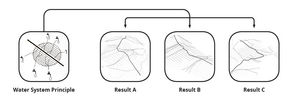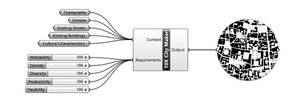
Research
Participation

The development of an effective planning approach combines aspects of both top-down and bottom-up investigations and takes into account existing informal processes and their stakeholders. It incorporates and coordinates the different sectoral perspectives, such as infrastructure and building systems. Based on an analysis of the institutional organisation of Ethiopian urban development, this component aims to suggest modifications and alternative approaches and to apply these in an integrative and participative planning strategy. Through providing cooperative planning methods that lead to a more process-oriented planning approach, Participation targets at developing projects with model character. They are integrating different disciplines and sectors committed to urban planning in a multi-sectoral approach.
Technology

Adaptable infrastructure systems and a close connection of building systems and urban planning are necessary to effectively and cost-efficiently build housing units. Technical systems considering the needs and concerns of urban design and infrastructure as well as meeting quality standards at the same time, are needed. Above that a rating system must be established to allow checking of the functionality of the adopted technologies with respect to given criteria. Thus the Technology component is about collection and cataloging of infrastructure criteria for Simulation and Participation.
Simulation

Computational planning methods offer the potential to create a large number of planning variants in a short space of time and to assess them according to different criteria. They can also simulate dynamic processes. For the planning of settlements in fast growing cities, this offers the possibility to examine a range of different “What if?” scenarios and to adapt planning
regulations accordingly to promote the desired pattern of urban development. The aim of Simulation is to develop a planning instrument that makes it possible to find potential solutions for urban design problems, allowing the involvement of stakeholders through cooperative processes and the integration of certain technological systems.


